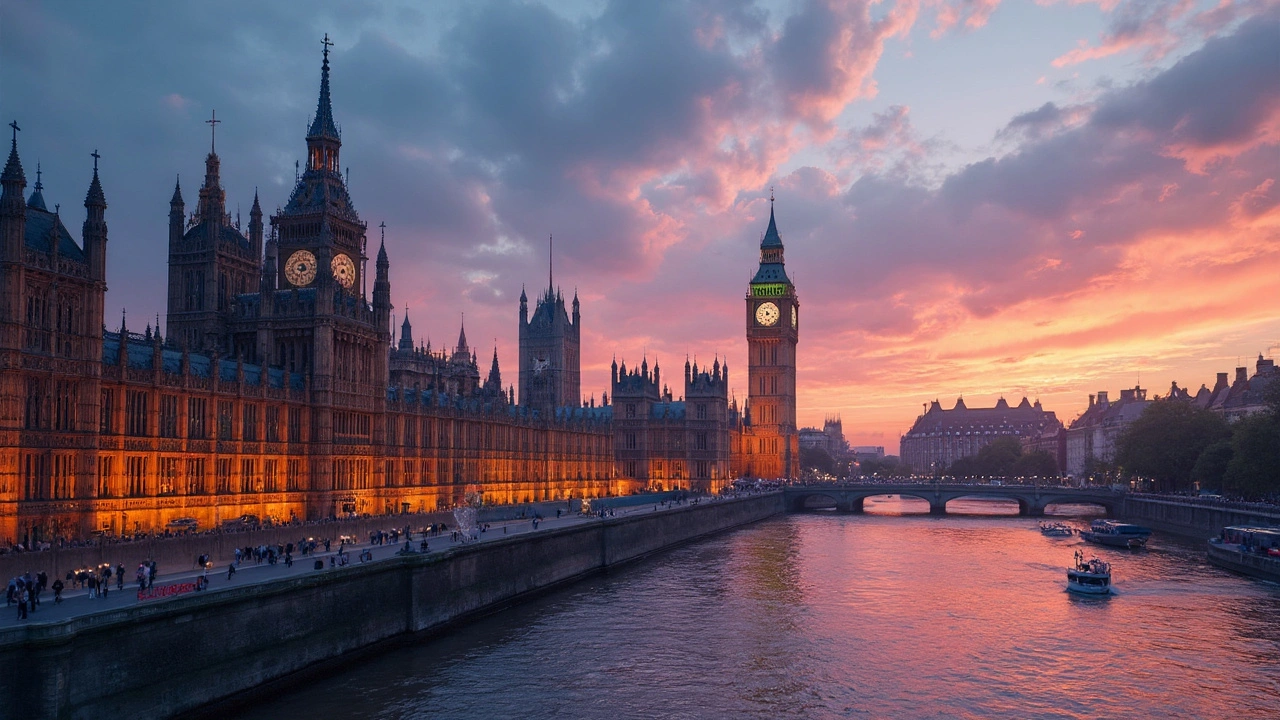London is a playground for anyone who loves architecture. Whether you’re a first‑timer or a local looking for a new angle, the city’s mix of historic stone, modern glass, and quirky details makes every stroll feel like a museum tour.
Start with the big names. The Tower Bridge, built in 1894, isn’t just a bridge – it’s a piece of engineering art. Walk along the high walkways to see the bascules up close and snap photos of the river below. The view also gives you a sense of how Victorian design blended functionality with drama.
Just a short tube ride away, the Houses of Parliament and Big Ben dominate the skyline. The neo‑Gothic style, with its towering spires and intricate stonework, tells the story of 19th‑century Britain’s confidence. Inside, the Commons chamber still buzzes with debate, and the clock tower’s chimes are a daily reminder of the city’s rhythm.
British design loves contrast. You’ll find sleek modern builds like The Shard standing next to centuries‑old structures such as St. Paul’s Cathedral. This blend isn’t random – it reflects a respect for heritage while embracing new ideas. Look for features like the classic red‑brick terraces in Kensington or the ornate façade of the Royal Albert Hall. Those details, from cornices to ironwork, reveal a love of craftsmanship.
If you enjoy hidden gems, skip the tourist crowds and head to neighborhoods like Shoreditch. Here, old warehouses have been turned into lofts with exposed brick and large windows, creating a hip industrial vibe. In Marylebone, you’ll find narrow streets lined with Georgian townhouses – perfect for a quiet coffee break while admiring symmetrical windows and doorways.
Plan a route that groups nearby sites. Start at the Tower Bridge, walk along the Thames to the Globe Theatre, and finish at the Houses of Parliament. This way you save time and get a natural flow of historic styles. Grab a map (or use a phone app) that highlights “architectural points of interest” – many apps let you filter by era or style.
Bring a notebook or phone to jot down details you want to remember, like the pattern of a cornice or the material of a façade. Opening hours matter: most historic buildings open around 10 am and close by 5 pm, so aim for a mid‑morning start. If you love photos, the golden hour (just after sunrise or before sunset) gives the stone a warm glow.
Don’t forget the museums. The Victoria and Albert Museum and the Design Museum showcase drawings, models, and artifacts that explain how these buildings came to be. They’re free, and they add depth to what you see on the streets.
Finally, be respectful. Many historic sites are still working spaces, so keep noise down and stay on marked paths. A little courtesy goes a long way toward preserving the charm for the next visitor.
British architecture isn’t just about famous landmarks; it’s the everyday details that give London its character. With a bit of curiosity and a simple plan, you can turn a regular walk into a memorable tour of design history.
Explore St. Paul’s Cathedral—London’s soul and skyline icon. Uncover history, hidden gems, local stories, practical tips, and what St. Paul’s means to Londoners today.

The Houses of Parliament in London are more than just the seat of British politics—they're a showcase of art, design, and local craftsmanship woven through Westminster’s skyline. This article digs into the history, hidden details, and stories behind those iconic Gothic windows and golden spires. We’ll highlight unique features you can spot whether you’re walking along the Thames or heading through St Stephen’s entrance. From local artists to quirky restoration tips, there’s always a new angle for Londoners, history buffs, and curious visitors alike. By the end, you’ll see Parliament in a whole new light—next time you’re heading to South Bank or passing Big Ben, you’ll know what to look out for.